- Home
- Neal Stephenson
Anathem Page 27
Anathem Read online
Page 27
So much information was crammed into the tablet’s outer fringe that I had to use its pan and zoom functions to make sense of it. The bright sky-disk seemed to have a deep dark notch cut into it at one place. On closer examination, this was the pedestal of the zenith mirror, which stood right next to Clesthyra’s Eye. Like the north arrow on a map, this gave me a reference point that I could use to get my bearings and find other things. About halfway around the rim from it was a wider, shallower notch in the sky-disk, difficult to make sense of. But if I turned it about the right way and gave my eye a moment to get used to the distortion, I could understand it as a human figure, wrapped in a bolt that covered everything except one hand and forearm. These were reaching radially outward (which meant down) and became grotesquely oversized before being cropped by the edge of the tablet. This monstrosity was me reaching toward the base of the Eye, having just inserted the tablet and secured the dust cover. The first time I saw this I laughed out loud because it made my elbow look as big as the moon, and by zooming in on it I could see a mole and count the hairs and freckles. My attempt to hide my identity by hooding myself had been a joke! If Suur Trestanas had found this tablet she could have found the culprit by going around and examining everyone’s right elbow.
When I let the tablet play forward, I could see the notch-that-was-me melt into the dark horizon-rim as I departed. A few moments later, a dark mote streaked around the tablet in a long arc, close to the rim: the aerocraft that had taken Fraa Paphlagon away to the Panjandrums. By freezing this and zooming in I could see the aerocraft clearly, not quite so badly distorted because it was farther away: the rotors and the streams of exhaust from its engines frozen, the pilot’s face, mostly covered by a dark visor, caught in sunlight shining through the windscreen, his lips parted as if he were speaking into the microphone that curved alongside his cheek. When I ran the time point forward a few minutes I was able to see the aerocraft flying back in the other direction, this time with the face of Fraa Paphlagon framed in a side-window, gazing back at the concent as if he’d never seen it before.
Then, by sliding my finger up along the side of the tablet for a short distance, I was able to make the sun commit its arc across the sky-disk and sink into the horizon. The tablet went dark. Stars must be recorded on it, but my eyes couldn’t see them very well because they hadn’t adjusted to the dark yet. A few red comets flashed across it—the lights of aerocraft. Then the disk brightened again and the sun exploded from the edge and launched itself across the sky the next morning.
If I ran my finger all the way up the side of the tablet in one continuous motion, it flashed like a strobe light: seventy-eight flashes in all, one for each day that the tablet had lodged in Clesthyra’s Eye. Coming to the last few seconds and slowing down the playback, I was able to watch myself emerging from the top of the stairs and approaching the Eye to remove the tablet during Fraa Orolo’s Anathem. But I hated to see this part of it because of the way my face looked. I only checked it once, just to be sure that the tablet had continued recording all the way until the moment I’d retrieved it.
I erased the first and last few seconds of the recording, so that if the tablet were confiscated it would not contain any images of me. Then I began reviewing it in greater detail. Arsibalt had mentioned seeing the Ita in this thing. Sure enough, on the second day, a little after noon, a dark bulge reached in from the rim and blotted out most of the sky for a minute. I ran it back and played it at normal speed. It was one of the Ita. He approached from the top of the stairs carrying a squirt-bottle and a rag. He spent a minute cleaning the zenith mirror, then approached Clesthyra’s Eye—which was when his image really became huge—and sprayed cleaning fluid on it. I flinched as if the stuff were being sprayed into my face. He gave it a good polish. I could see all the way up into his nostrils and count the hairs; I could see the tiny veins in his eyeballs and the striations in his iris. So there was no doubt that this was Sammann, the Ita whom Jesry and I had stumbled upon in Cord’s machine-hall. In a moment he became much smaller as he backed away from the Eye. But he did not depart from the top of the Pinnacle immediately. He stood there for several moments, bobbed out of view, re-appeared, approached and loomed in Clesthyra’s Eye for a little bit, then finally went away.
I zoomed in and watched that last bit again. After he polished the lens, he looked down, as if he had dropped something. He stooped over, which made all but his backside disappear beyond the rim of the tablet. When he stood up, bulging back into the picture again, he had something new in his hand: a rectangular object about the size of a book. I didn’t have to zoom in on this to know what it was: the dust jacket that, a day previously, I had torn off this very tablet. The wind had snatched it from my hand, and in my haste to leave, I had, like an idiot, left it lying where it had fallen.
Sammann examined it for a minute, turning it this way and that. After a while he seemed to get an idea of what it was. His head snapped around to look at me—at Clesthyra’s Eye, rather. He approached and peered into the lens, then cocked his head, reached down, and (I guessed, though I couldn’t see) prodded the little door that covered the tablet-slot. His face registered something. If I’d wanted, I could have zoomed in on his eyeballs and seen what was reflected in them. But I didn’t need to because the look on his face told all.
Less than twenty-four hours after I had slipped that tablet into Clesthyra’s Eye, someone else in this concent had known about it.
Sammann stood there for another minute, pondering. Then he folded up the dust jacket, inserted it into a breast-pocket of his cloak, turned his back on me, and walked away.
I moved the tablet forward to a cloudy night, thereby plunging myself into almost total blackness, and I sat there in that hole in the ground and tried to get over this.
I was remembering the other evening, standing around the campfire, when I had criticized Orolo for being incautious, and told my friends that I’d be much more careful. What an idiot I was!
Watching Sammann pick up that dust jacket and put two and two together, my face had flushed and my heart had thumped as if I were actually there on top of the Pinnacle with him. But this was just a recording of something that had happened months ago. And nothing had come of it. Granted, Sammann could spill the beans any time he chose.
That was unnerving. But I could do nothing about it. Feeling embarrassed by a mistake I’d made months ago was a waste of time. Better to think about what I was going to do now. Sit here in the dark worrying? Or keep investigating the contents of this tablet? Put that way, it wasn’t a very difficult question. The fury that had taken up residence in my gut was a kind of anger that had to be acted upon. The action didn’t need to be sudden or dramatic. If I’d joined one of the other orders, I might have made acting upon it into a sort of career. Using it as fuel, I could have spent the next ten or twenty years working my way up the hierarch ranks, looking for ways to make life nasty for those who had wronged Orolo. But the fact of the matter was that I’d joined the Edharians and thereby made myself powerless as far as the internal politics of the concent were concerned. So I tended to think in terms of murdering Fraa Spelikon. Such was my anger that for a little while this actually made sense, and from time to time I’d find myself musing about how to carry it off. There were a lot of big knives in the kitchen.
So how fortunate it was that I had this tablet, and a place in which to view it. It gave me something to act on—something, that is, besides Fraa Spelikon’s throat. If I worked on it hard enough and were lucky, perhaps I could come up with some result that I could announce one evening in the Refectory to the humiliation of Spelikon, Trestanas, and Statho. Then I could storm out of the concent in disgust before they had time to Throw me Back.
And in the meantime, studying this thing answered that need in my gut to take some kind of action in response to what had been inflicted on Orolo. And I’d found that taking such action was the only way to transmute my anger back into grief. And when I was grieving—instead of ang
ry—young fids no longer shied away from me, and my mind was no longer filled with images of blood pumping from Fraa Spelikon’s severed arteries.
So I had no choice but to put Sammann and the dust cover out of my mind, and concentrate instead on what Clesthyra’s Eye had seen during the night-time. I had kept track of the weather those seventy-seven nights. More than half had been cloudy. There had only been seventeen nights of really clear seeing.
Once I allowed my eyes to adjust to the darkness, it was easy to find north on this thing, because it was the pole around which all the stars revolved. If the image was frozen, or playing back at something like normal speed, the stars appeared as stationary points of light. But if I sped up the playback, each star, with the exception of the pole star, traced an arc centered on the pole as Arbre rotated beneath it. Our fancier telescopes had polar axis systems, driven by the clock, that eliminated this problem. These telescopes rotated “backwards” at the same speed as Arbre rotated “forwards” so that the stars remained stationary above them. Clesthyra’s Eye was not so equipped.
The tablet could be commanded to tell what it had seen in several different ways. To this point I’d been using it like a speelycaptor with its play, pause, and fast-forward buttons. But it could do things that speelycaptors couldn’t, such as integrate an image over a span of time. This was an echo of the Praxic Age when, instead of tablets like this one, cosmographers had used plates coated with chemicals sensitive to light. Because many of the things they looked at were so faint, they had often needed to expose those plates for hours at a time. A photomnemonic tablet worked both ways. If you were to “play back” such a record in speelycaptor mode, you might see nothing more than a few stars and a bit of haze, but if you configured the tablet to show the still image integrated over time, a spiral galaxy or nebula might pop out.
So my first experiment was to select a night that had been clear, and configure the tablet to integrate all the light that Clesthyra’s Eye had taken in that night into a single still image. The first results weren’t very good because I set the start time too early and the stop time too late, so everything was washed out by the brightness in the sky after dusk and before dawn. But after making some adjustments I was able to get the image I wanted.
It was a black disk etched with thousands of fine concentric arcs, each of which was the track made by a particular star or planet as Arbre spun beneath it. This image was crisscrossed by several red dotted lines and brilliant white streaks: the traces made by the lights of aerocraft passing across our sky. The ones in the center, made by high-flying craft, ran nearly straight. Over toward one edge the star-field was all but obliterated by a sheaf of fat white curves: craft coming in to land at the local aerodrome, all following more or less the same glide path.
Only one thing in this whole firmament did not move: the pole star. If our hypothesis was correct as to what Fraa Orolo had been looking for—namely, something in a polar orbit—then, assuming it was bright enough to be seen on this thing, it ought to register as a streak passing near the pole star. It would be straight or nearly so, and oriented at right angles to the myriad arcs made by the stars—it would move north-south as they moved east-west.
Not only that, but such a satellite should make more than one such streak on a given night. Jesry and I had worked it out. A satellite in a low orbit should make a complete pass around Arbre in about an hour and a half. If it made a streak on the tablet as it passed over the pole at, say, midnight, then at about one-thirty it should make another streak, and another at three, and another at four-thirty. It should always stay in the same plane with respect to the fixed stars. But during each of those ninety-minute intervals Arbre would rotate through twenty-two and a half degrees of longitude. And so the successive streaks that a given satellite made should not be drawn on top of each other. Instead they should be separated by angles of about twenty-two and a half degrees (or pi/8 as theoricians measured angles). They should look like cuts on a pie.
My work on that first day in the sub-cellar consisted of making the tablet produce a time exposure for the first clear night, then zooming in on the vicinity of the pole star and looking for something that resembled a pie-cutting diagram. I succeeded in this so easily that I was almost disappointed. Because there was more than one such satellite, what it looked like was more complex:
But if I looked at it long enough I could see it as several different pie-cut diagrams piled on top of each other.
“It’s an anticlimax,” I told Jesry at supper. We had somehow managed to avoid Barb and sit together in a corner of the Refectory.
“Again?”
“I’d sort of thought that if I could see anything at all in a polar orbit, that’d be the end of it. Mystery solved, case closed. But it is not so. There are several satellites in polar orbits. Probably have been ever since the Praxic Age. Old ones wear out and fall down. The Panjandrums launch new ones.”
“That is not a new result,” he pointed out. “If you go out at night and stand facing north and wait long enough, you can see those things hurtling over the pole with the naked eye.”
I chewed a bit of food as I struggled to master the urge to punch him in the nose. But this was how things were done in theorics. It wasn’t only the Lorites who said that is not a new result. People reinvented the wheel all the time. There was nothing shameful in it. If the rest of us oohed and aahed and said, “Gosh, a wheel, no one’s ever thought of that before,” just to make that person feel good, nothing would ever get done. But still it stung to risk so much and do so much work to get a result, only to be told it was nothing new.
“I don’t claim it is a new result,” I told him, with elaborate patience. “I’m only letting you know what happened the first time I was able to spend a couple of hours with the tablet. And I guess I am posing a question.”
“All right. What is the question?”
“Fraa Orolo must have known that there were several satellites in polar orbits and that this wasn’t a big deal. To a cosmographer, it’s no more remarkable than aerocraft flying overhead.”
“An annoyance. A distraction,” Jesry said, nodding.
“So what was it that he risked Anathem to see?”
“He didn’t just risk Anathem. He—”
I waved him off. “You know what I mean. This is no time to go Kefedokhles.”
Jesry gazed into space above my left shoulder. Most others would have been embarrassed or irritated by my remark. Not him! He couldn’t care less. How I envied him! “We know that he needed a speelycaptor to see it,” Jesry said. “The naked eye wasn’t good enough.”
“He had to see all of this in a different way. He couldn’t make time exposures on a tablet,” I put in.
“The best he could do, once the starhenge had been locked, was to stand out in that vineyard, freezing his arse off, looking at the pole star through the speelycaptor. Waiting for something to streak across.”
“When it showed up, it would zoom across the viewfinder in a few moments,” I said. We were completing each other’s sentences now. “But then what? What would he have learned?”
“The time,” Jesry said. “He would know what time it was.” He shifted his gaze to the tabletop, as if it were a speely of Orolo. “He makes a note of it. Ninety minutes later he looks again. He sees the same bird making its next pass over the pole.” Lio referred to satellites as birds—this was military slang he’d picked up from books—and the rest of us had adopted the term.
“That sounds about as interesting as watching the hour hand on a clock,” I said.
“Well, but remember, there’s more than one of these birds,” he said.
“I don’t have to remember it—I spent the whole afternoon looking at them!” I reminded him.
But Jesry was on the trail of an idea and had no time for me and my petty annoyance. “They can’t all be orbiting at the same altitude,” he said. “Some must be higher than others—those would have longer periods. Instead of ninety minutes they m
ight take ninety-one or a hundred three minutes to go around. By timing their orbits, Fraa Orolo could, by making enough observations, compile sort of—”
“A census,” I said. “A list of all the birds that were up there.”
“Once he had that in hand, if there was any change—any anomaly—he’d be able to detect it. But until such time as he had completed that census, as you call it—”
“He’d be working in the dark, in more ways than one, wouldn’t he?” I said. “He’d see a bird pass over the pole but he wouldn’t know which bird it was, or if there was anything unusual about it.”
“So if that’s true we have to follow in his footsteps,” Jesry said. “Your first objective should be to compile such a census.”
“That is much easier for me than it was for Orolo,” I said. “Just looking at the tracks on the tablet you can see that some are more widely spread—bigger slices of the pie—than others. Those must be the high flyers.”
“Once you get used to looking at these images, you might be able to notice anomalies just by their general appearance,” Jesry speculated.
Which was easy for him to say, since he wasn’t the one doing it!
For the last little while he had seemed restless and bored. Now he broke eye contact, gazed around the Refectory as if seeking someone more interesting—but then turned his attention back to me. “New topic,” he announced.
“Affirmative. State name of topic,” I answered, but if he knew I was making fun of him, he didn’t show it.

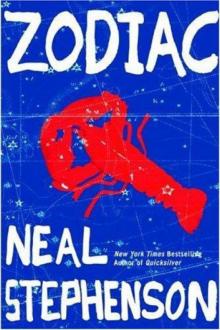 Zodiac: The Eco-Thriller
Zodiac: The Eco-Thriller The Mongoliad: Book One
The Mongoliad: Book One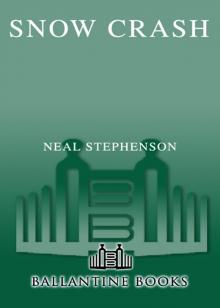 Snow Crash
Snow Crash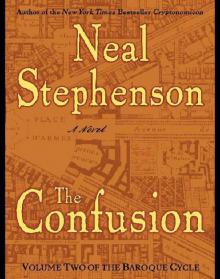 The Confusion: Volume Two of the Baroque Cycle
The Confusion: Volume Two of the Baroque Cycle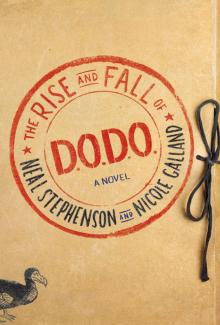 The Rise and Fall of D.O.D.O.
The Rise and Fall of D.O.D.O. The Diamond Age: Or, a Young Lady's Illustrated Primer
The Diamond Age: Or, a Young Lady's Illustrated Primer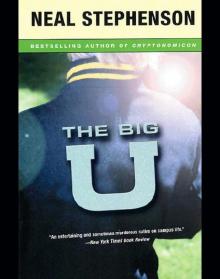 The Big U
The Big U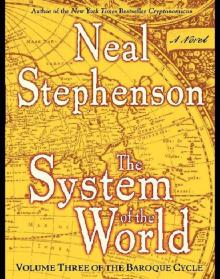 The System of the World: Volume Three of the Baroque Cycle
The System of the World: Volume Three of the Baroque Cycle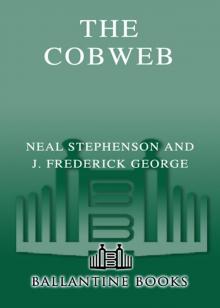 The Cobweb
The Cobweb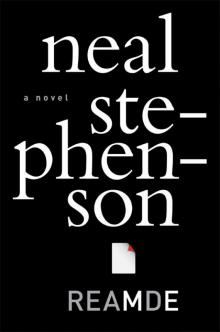 Reamde
Reamde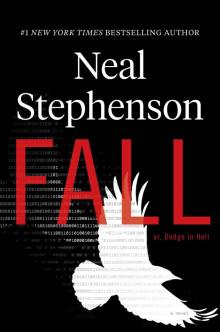 Fall; or, Dodge in Hell
Fall; or, Dodge in Hell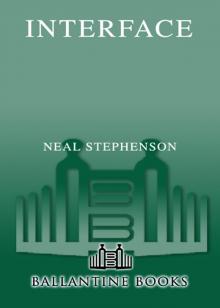 Interface
Interface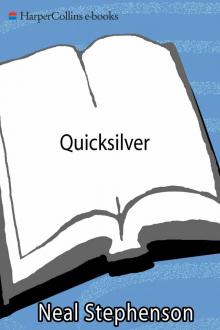 Quicksilver
Quicksilver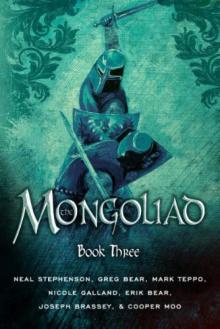 The Mongoliad: Book Three
The Mongoliad: Book Three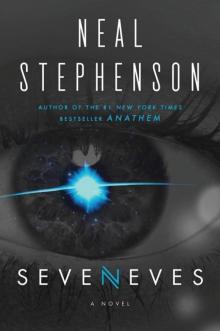 Seveneves
Seveneves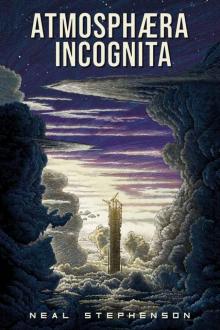 Atmosphæra Incognita
Atmosphæra Incognita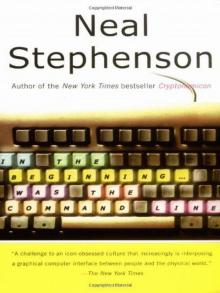 In the Beginning...Was the Command Line
In the Beginning...Was the Command Line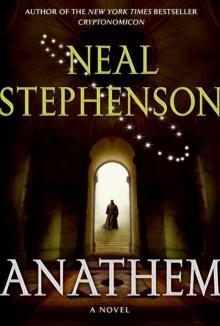 Anathem
Anathem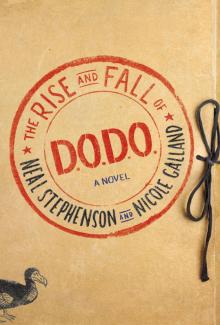 The Rise and Fall of D.O.D.O.: A Novel
The Rise and Fall of D.O.D.O.: A Novel The Mongoliad: Book Two
The Mongoliad: Book Two Diamond Age or a Young Lady's Illustrated Primer
Diamond Age or a Young Lady's Illustrated Primer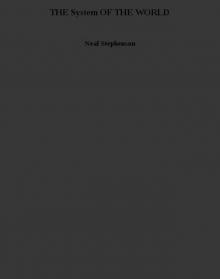 THE System OF THE WORLD
THE System OF THE WORLD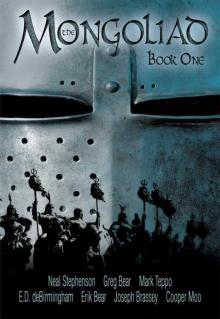 The Mongoliad: Book One tfs-1
The Mongoliad: Book One tfs-1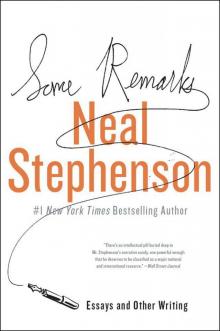 Some Remarks: Essays and Other Writing
Some Remarks: Essays and Other Writing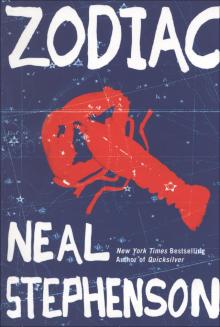 Zodiac
Zodiac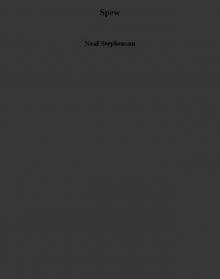 Spew
Spew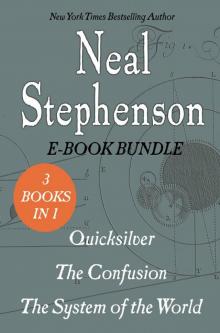 The Baroque Cycle: Quicksilver, the Confusion, and the System of the World
The Baroque Cycle: Quicksilver, the Confusion, and the System of the World The Diamond Age
The Diamond Age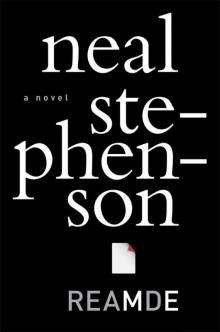 Reamde: A Novel
Reamde: A Novel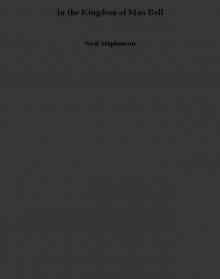 In the Kingdom of Mao Bell
In the Kingdom of Mao Bell Mother Earth Mother Board
Mother Earth Mother Board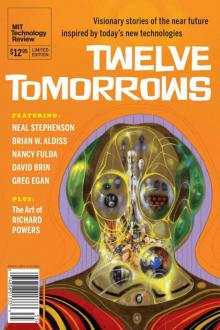 Twelve Tomorrows - Visionary stories of the near future inspired by today's technologies
Twelve Tomorrows - Visionary stories of the near future inspired by today's technologies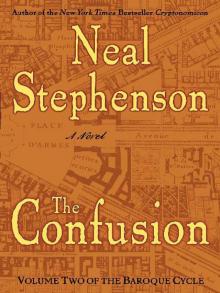 The Confusion
The Confusion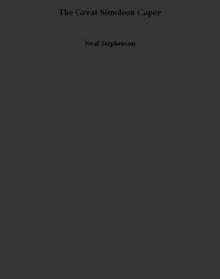 The Great Simoleon Caper
The Great Simoleon Caper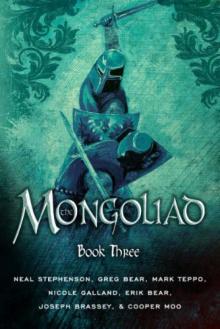 The Mongoliad: Book Three tfs-3
The Mongoliad: Book Three tfs-3